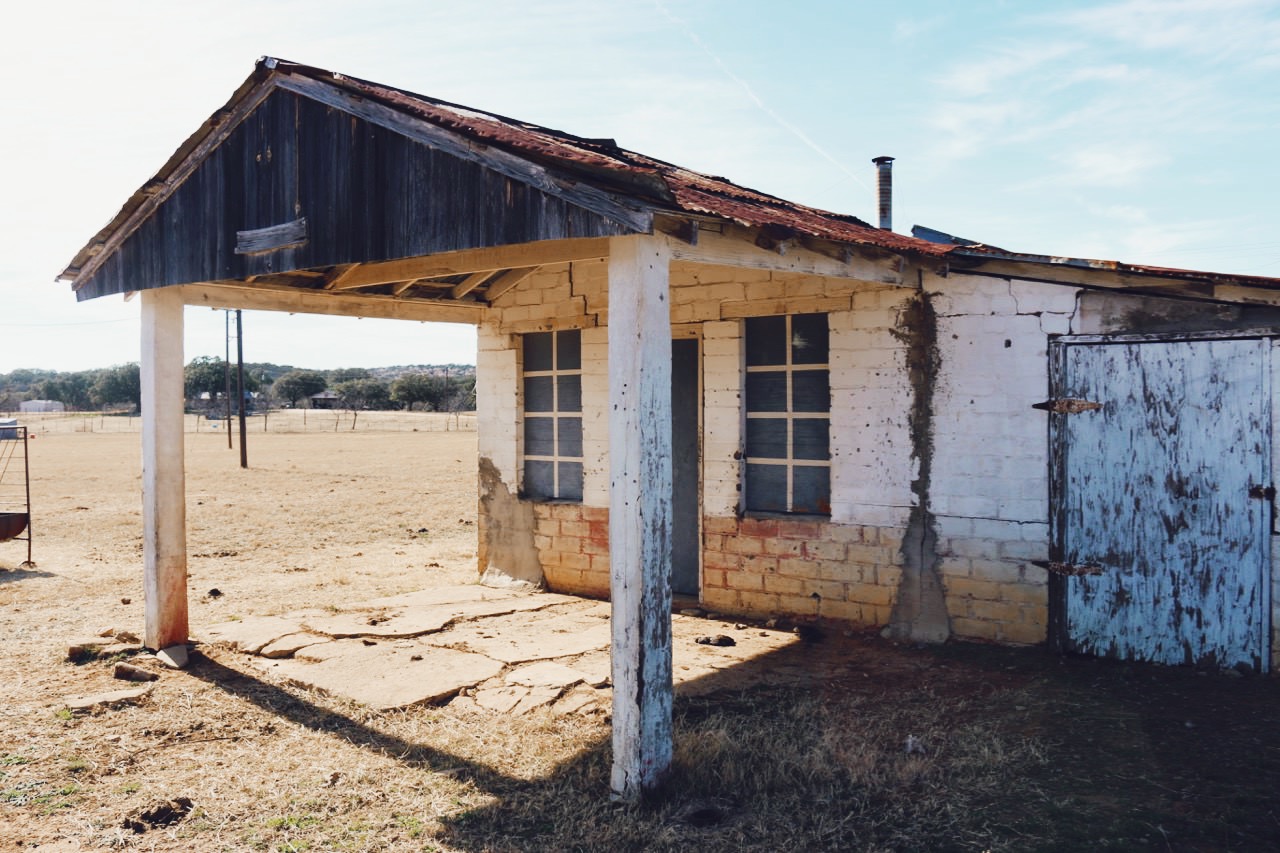Founded in 1876, Benton may have been named for Missouri senator, Thomas Hart Benton or Samuel L. Benton, a hero of the Texas Revolution. By 1904, Benton held within its city limits a Masonic lodge, a newspaper, a school (the Benton City Institute), one general store, a blacksmith shop, a gristmill-gin, three churches, and several ranching operations. Bypassed by the International-Great Northern Railroad in 1881, the town spent the majority of its existence struggling to stay afloat. In 1919, the high school consolidated with the Lytle school district and in 1934 the elementary school closed. Eventually, all that would remain to mark the site of a once-great town would be the abandoned Benton City Institute, located within the present-day city of Lytle, Texas.
ANALYSIS OF THE RUINS OF THE BENTON CITY INSTITUTE
Approximate Location: (29*12′11″, 98*46′12″)
by William Timmerman
CHARACTERISTICS:
Fashioned out of irregular rocks and mortar, this well-constructed building was built in 1875 [1] and stands two stories high. The City of Lytle, Texas says that it “resembles a fortress. The walls are more than a foot thick and made from yellow rock. Inside the building is plastered roughly and outside the thin sabs of irregular rock form an uneven surface [1].” I estimate the building to be 48 feet long by 22 ft wide based on an aerial perspective. The front of the building points 60 degrees NE. There are eight windows on each of the long fasces of the building, four for each floor. On the front face there is one first story door and two second story windows. On the back there is only one door.
STRUCTURAL INTEGRITY (8/10):
The wooden beams of the second story (spaced at 5 ft intervals) are intact although the rest of the second story floor is gone. There is also no trace of the first story floorboards. Small shrubs and vines have taken residence inside the building. There is moderate damage to the walls and one prominent fissure on the front, which may lead to further structural weakening and eventual collapse.
VANDALISM (3/10):
Both the interior and exterior walls appear to be free from spray paint. There is a decent amount of graffiti lightly etched into the mortar both on the first and second story, leading me to believe that this vandalism occurred many years before the second story floor collapsed.

